Daisies (Bellis Perennis ) are beautiful flowers cultivated all over the world. The common daisies have beautiful soft white petals with a yellow center that makes them pleasant and aesthetic. Daisies are in bloom all over the year and can adapt themselves to almost any kind of environment.
Daisies are vibrant, cheerful, and easy to grow flowers, which makes them perfect for gardening. They are outdoor plants and can be grown indoors if supported with proper care and attention.
A lot can go wrong with your daisies if you don’t provide an ideal growing environment for their proper growth. If they are not supported with a favorable climate, they will experience many problems such as yellow or brown leaves, mottled leaves, and many more issues that will affect their growth.
Daisies need a minimum of 6 hours of direct sunlight and an adequate amount of water for their growth. The temperature range should be between 70-75°F. Daisies need fertile and moist soil with an ample amount of nutrients to survive.
Daisies need some care and attention for their healthy growth. Understanding daisies can be tricky sometimes.
They are prone to suffer a lot because of improper watering and pest infections. This guide will help you to understand the primary care routine for daisies. This article will describe the possible reasons why your daisies suffer and help solve and treat them.
Daisies overview
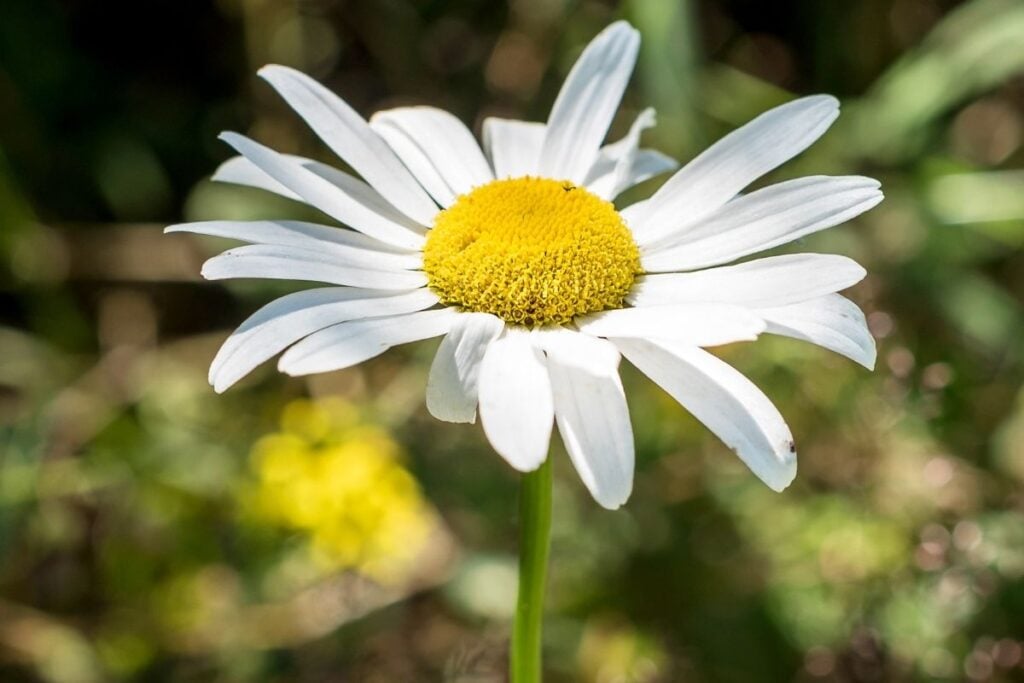
They are native to Europe but have become a common wild plant in North America. They are now cultivated almost all over the world except Antarctica.
Daisies are cheerful white–petaled flowers with yellow centers and fresh green foliage. They start blooming in late springs until autumn. They are around 2 to 3 feet tall.
The most common problem with daisies is the drooping of their leaves, and stem turns woody due to improper watering techniques. Also, their leaves are chewed by slugs or snails. It adversely affects the plants and becomes a reason for their poor growth.
You have to pay attention to all these problems if you are planting daisies. You always need to deadhead the daisies and prune their leaves as needed, fertilize them and maintain a cleaner, drier environment for them.
Are daisies easy to grow?
Daisies are vibrant, cheerful, and too easy to grow flowers. They are stunning and reliable bloomers that make them perfect for gardening options. They are drought-tolerant plants and can adapt themselves to any kind of environment.
Caring for daisies indoors requires more attention since daisies are outdoor plants. If you want your daisies’ speedy and healthy growth, you just need to care for their basic requirements.
Are daisies indoors or outdoors?
Daisies are considered outdoor garden plants, but they can be grown indoors if supported with proper growing space. Daisies need a delicate balance of sunlight and current temperature.
Daisies take almost a whole year to become blooming plants. Over time, their flowers can become sparse at the center and leggy. To Prevent This, division of daisies is essential.
For this, You should plant daisies 1 to 2 feet apart to have enough space for them to grow correctly. So, they are preferred to be grown outside, such as in garden or backyard areas.
The daisies can grow to a height of 2 to 3 feet in size, and flower heads of the daisies are about 2.5 to 5 cm in diameter. As flowers fade, you can deadhead them to extend the blooming season.
Daisies care
Daisies are plants that need some care and attention, which is vital for their proper development. Always plant them in full sun, don’t over-fertilize them, and give them their appropriate space.
Caring for daisies is easy as long as you keep them moist and pruned. Remove flowers as they fade to make them away for their new growth. You can apply some compost and mulch that will help in controlling weeds.
Daisies always prefer fast-draining soil, plenty of water, and an ample amount of direct sunlight. Water them whenever the topsoil feels dry. Since Daisy’s growth depends on these factors, you always have to take care of the proper fulfillment of these factors.
While caring for daisies, you will need to keep a few things in mind. This article will support your search for all the information regarding soil, water, sunlight, fertilizers, and all other things that affect your daisies and find out problems that hamper your daisies’ growth.
Soil mix for daisies
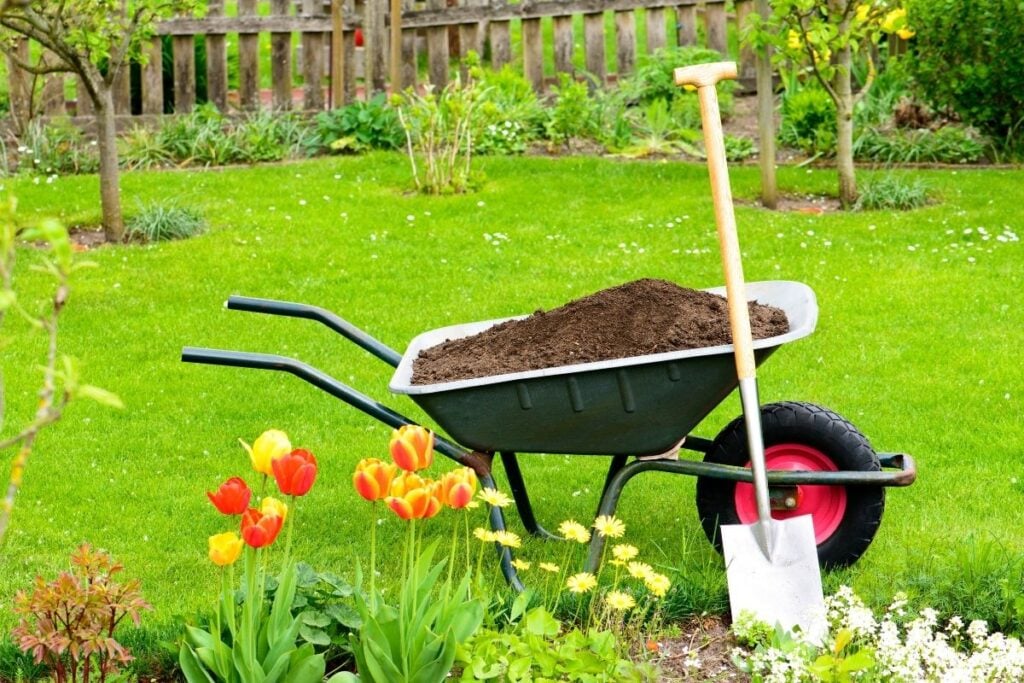
Daisies do well in any kind of soil. Proper composition of the soil is essential. The soil should contain nutrients such as nitrogen, phosphorus, and potassium with small calcium, sulfur, iron, magnesium, and other nutrients.
You can use a mix of organic matter, including manure compost, sand peat moss. It will create an ideal environment for vigorous plants with showy blooms.
Materials such as leaves, bark, wood chips, and straw help retain moisture in the soil and cool it down. Daisies need acidic soil with a PH value ranging from 6.0 two 8.0 on the pH scale.
They need fast-draining soil that can hold moisture for a long time. The soil should provide enough nutrients to the plant. It should be loose enough to provide breathing space for the plant.
Also read: What Kind Of Soil Do Daisies Need? (Daisy Soil Requirements)
Daisies water requirements
Daisies require a proper balance of sunlight and water. Daisies are tough, drought-tolerant plants that do not like soggy soil.
For that, you should have a proper watering schedule for your daisies. During spring, you should water them at least once a week.
During rainy seasons, you should reduce your watering level. Since daisies are perennial plants, they will not die during harsh winters, and therefore, you need to water them once a month. You should water it according to the weather conditions.
Also read: How Much Water Do Daisies Need? (Daisy Water Requirements)
Sunlight requirement
Sunlight is the only source that helps daisies to prepare their food. Understanding the light requirement of daisies is essential for their healthy growth routine. Daisies need at least six hours of proper sunlight in a day for their full potential.
You should place your daisies in an area where there is adequate sunlight for your plant. You should expose them to harsh sunlight since this can hamper daisies’ development.
You should also provide them with a bit of afternoon shade to avoid sunburn. Proper sunlight will help your daisies multiply, and they will be less likely to be infected with fungus and other diseases.
Also read: How Much Light Do Daisies Need? (Daisy Sunlight Requirements)
Looking for gardening supplies? We have tested 100's of products before recommending them to you guys. Check out our best pick below:
| Image | Gardening Supplies | Best Price? |
|---|---|---|
 Top
Top Top
Top | Raised Garden Bed Kit | Check On Amazon |
 | XLUX Soil Moisture Meter, Plant Water Monitor, Soil Hygrometer Sensor for Gardening, Farming, Indoor and Outdoor Plants, No Batteries Required | No Results |
 Top
Top Top
Top | 82 Pcs Garden Tools Set and Extra Succulent Tools Set | Check On Amazon |
 | Joeys Garden Expandable Garden Hose with 8 Function Hose Nozzle, Lightweight Anti-Kink Flexible Garden Hoses, Extra Strength Fabric with Double Latex Core, (50 FT, Black) | No Results |
 Top
Top Top
Top | Dual Chamber Compost Tumbler | Check On Amazon |
 Top
Top Top
Top | Sunnyglade Plant Stakes | Check On Amazon |
 Top
Top Top
Top | Organic Cold Pressed Neem Seed Oil | Check On Amazon |
 Top
Top Top
Top | Mighty Mint Gallon :-Insect and Pest Control Peppermint Oil | Check On Amazon |
 Top
Top Top
Top | Scotts DiseaseEx Lawn Fungicide | Check On Amazon |
 Top
Top Top
Top | Jacks Classic 20-20-20 All Purpose Fertilizer | Check On Amazon |
 Top
Top Top
Top | 30,000 Seeds Pollinator Attracting Wildflower Mixture | Check On Amazon |
 Top
Top Top
Top | Survival Vegetable Seeds Garden Kit-Over 16,000 Seeds | Check On Amazon |
Fertilizer requirement
Daisies need a good amount of nutrients for their healthy growth. Fertilizers that are rich in nitrogen and phosphorus are good for daisies.
You can add all-purpose fertilizer every month. Daisies are heavy feeders and will be benefitted from a light spring fertilizer and summer liquid feeding.
During the initial stages of daisies, you should fertilize them every two weeks. Use all-purpose fertilizers (10-10-10) and phosphorus-rich fertilizers (10-16-10) for your daisies.
Also read: Do Daisies Need Fertilizer?
Temperature and humidity
Daisies like an environment with moderate humidity and cool temperature. High temperatures can stress the plant and will stop blooming.
Scorching and dry conditions can make them feel dry, and their leaves start to droop.
In that case, you may apply mulch in the soil to keep them moisturized. You can use the deep irrigation method to water your plant during harsh summer. Daisies prefer a temperature range between 40-70°F with no damage.
Propagation of daisies
Daisies are easy to propagate. If your daisies are dying and do not bloom properly, then you can follow some propagation techniques.
To propagate your existing daisies, you can divide them every 3-4 years in early spring or late summer. If your clump of daisies is about 3 years old, then they will be woody and can even die.
To divide the plant, dig the clump and remove the woody center of your daisies. After that, you get two or three sections with healthy rhizomes. You can replant these in your garden or backyard area just below the crown of your plant.
Also read: How To Propagate Daisy Plants? (Step-by-Step Guide)
Pruning of daisies
Daisies are easy to prune. This plant turns mushy during winters, so pruning is a good option for tidying up the garden area.
After the first frost that kills perennial daisies, you need to cut the stems of your daisies about an inch above the soil line.
Also, you can bend and snap the stems of your plant near the ground. So, this is an effective option for pruning. It will control the size and shape of your plant to optimize the blooms and remove dead and diseased portions.
Common problems of daisies
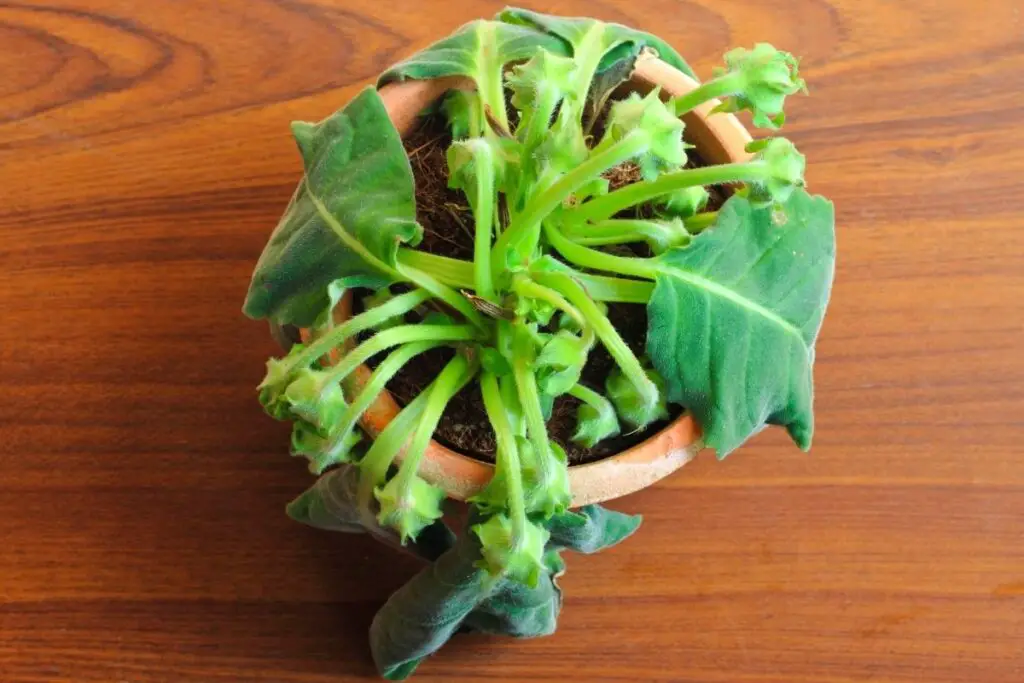
Daisies are sturdy and drought-resistant plants. But to grow and thrive, they need favorable conditions. If they are not supported with such favorable conditions, then they will suffer many problems.
Daisies can face many complications such as:
- Dropping of leaves
- Flopping of stems
- Curling of leaves and distortion by aphids
- Mealybugs attack
- Leaves chewed by slugs or snails
- Mottled leaves
- Leaves covered with white powder
- Browning of leaves
- Yellowing of leaves
- No blooming of flowers
We will now discuss each point in detail.
Drooping of leaves
Drooping of leaves is a common problem in daisies, and also their stems become woody. It is because of improper watering.
If you are growing daisies in poorly drained or heavy soil, then the leaves of daisies will start falling, and this will cause root drowning.
Solution:
To avoid this problem, you have to place your plant on a well-drained site. You also need to improve your soil by adding sand, peat moss, and drainage materials such as tiles to drain the excess water.
Daisies will start developing woody stems if they are under-watered. They will also start losing their leaves.
You need to water your daisies more frequently and ensure that water is absorbed through the mulch layer instead of running off bare soil.
Flopping of stems
Daisies need at least 6 hours of proper sunlight. If they do not get the required amount of sun, they will start developing flopping stems. It happens because they are under too much shade.
Solution:
To overcome this, you need to place your plant in a sunny location. You need to remove those branches or separate those plants that are shading your daisies. You have to make sure that they receive their required amount of sunlight.
Curling of leaves and distortion by aphids
Leaves of daisies may turn yellow or brown. They wilt under bright sunlight, and sometimes they curl and pucker. It can happen because of aphids. Aphids are also known as plant lice.
They are soft-bodied, pear-shaped insects that gather in large visible groups on tender tips of stem and buds of daisies. Their feeding restricts the growth of plants. Aphids are pretty harmful to daisies, and they can obliterate them.
Solution:
To overcome this problem, you need to pinch off the infected tender tips of stems and bud and discard them in the trash. This process does not harm daisies’ growth.
If aphids return, you need to use insecticidal soaps according to their given instructions on the label. Also, you need to check if your plant is stressed in any way that makes it vulnerable to insect infestation.
Mealybug’s attack
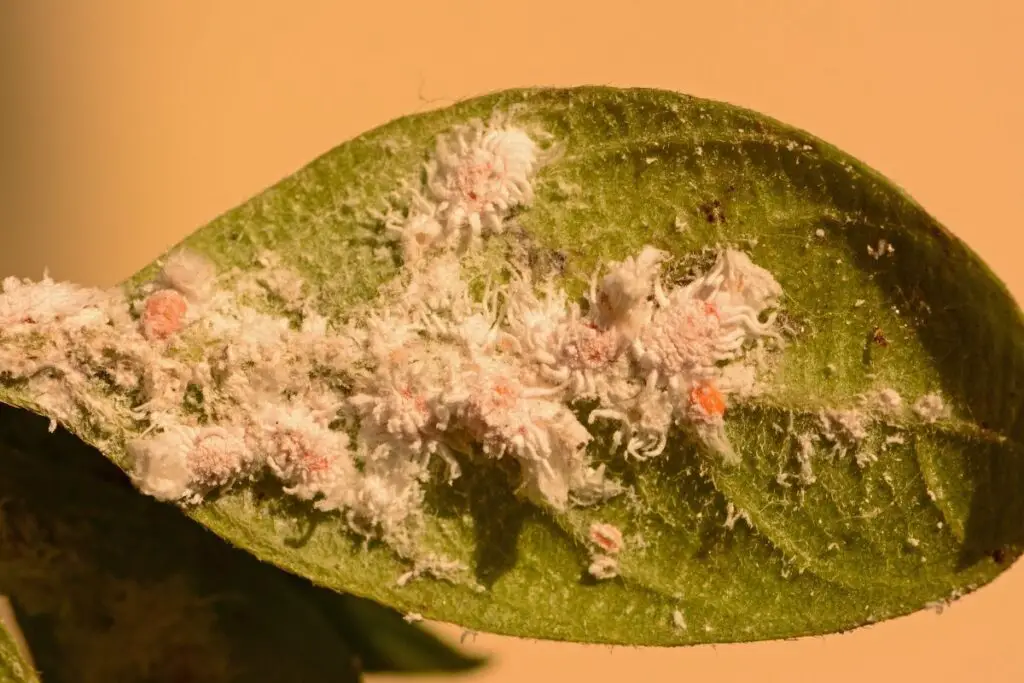
Mealybugs are small unarmored scale insects covered with white waxy powder and adorned with soft spines around their margins. They are found in the moist warm habitat.
They are attracted to plants with high nitrogen levels and have weak growth. They can also appear if you over-water and over-fertilize them.
They suck plant sap and encourage mold growth that attracts ants. This pest causes poor growth of plants and turns them weak. Daisies can die if severely attacked.
Solution:
You can control Mealybugs by using isopropyl alcohol solution and insecticidal soaps to kill them. Spray solutions are more effective and efficient to use.
Leaves chewed by slugs or snails
Slugs are shell-less terrestrial insects that are 1 to 2 inches long. They are found in different colors, such as yellow, green, brown, and black. Slugs or snails are attracted to moist and acidic soil.
Daisies attacked by these snails or slugs suffer large ragged holes in their leaves and stems. They are mainly active at night, and they use their file–like tongues to create holes in leaf and stem surfaces.
During the daytime, they hide under leaves. They are harmful to daisies.
Solution:
To overcome pests like snails or slugs, you need to trap them in either a commercial slug trap or a shallow plate filled with beer and place them in your garden.
The pests are attracted to the yeast in the beer, climb in, and drown. You need to trap them within the first three to four weeks after the last frost.
You need to catch them as early as possible, so there will be less chance of their reproduction. If your trap has no cover, you need to renew the beer or yeast bait after it rains.
Mottled leaves
Botrytis Gray Mould mottles the leaves of daisies. They are dangerous fungus that attacks daisies in a cold, damp environment or too much shade. They attack daisies during warm and humid conditions.
Solution:
To overcome this fungus, you need to prune your daisies to increase air circulation between them. Then you need to shift your plant to a sunnier location and improve your soil drainage capacity.
You can remove the damaged leaves and dust-infected leaves by using a garden sulfur fungicide to prevent the spread of the fungus. You can dig and discard those plants that seem to catch this disease.
Leaves covered with white powder
It is also a fungal disease that is easy to recognize, and it creates a white to grey powdery growth on leaves, stems, and flowers of daisies.
Powdery mildews are caused by a fungus that lives on the surface cells of plants. This powdery mildew turns the leaves of daisies discolored and distorted, which ultimately drops off.
They can thrive in both humid and dry weather conditions. They are not very harmful, but they are unsightly.
Solution:
To overcome powdery mildews, you can combine one tablespoon of baking soda and one–half teaspoon of liquid, non-detergent soap with one gallon of water and spray the mixture on the plants.
You can also use a sulfur fungicide to prevent the spread of this fungus. You need to follow the instructions on the product label.
Also, allow ample spacing between plants to promote air-circulation between daisies.
Browning of leaves
The beautiful flowers of daisies may turn brown, and this happens because of many reasons. Reasons behind the brown leaves of your daisies can be under watering, overwatering, and sunburn.
Underwatering can cause the soil to be too dry and causes the dropping of leaves. Daisies will be unable to absorb water and nutrients from the soil, and thus, there will be brown spots on leaves.
Overwatering leads to root rot. It will create brown patches on leaves. Brown patches on leaves can also be because of too much direct sunlight.
Solution:
If overwatering is the cause, you have to stop watering for a few days, and if under watering is the cause, you have to add water.
If sunburn is the problem, you have to place your daisies in a spot with no direct rays.
Yellowing of leaves of daisies
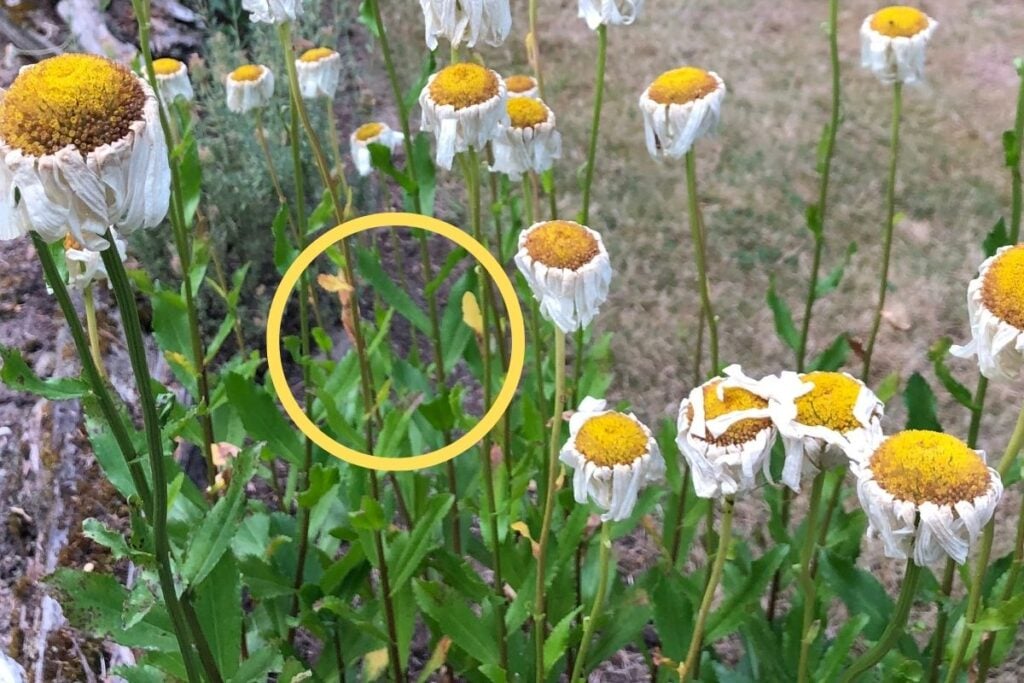
Improper care and too much rain can cause daisy’s leaves to turn yellow. Daisies, which are grown in areas that tend to collect standing water, or those grown in containers that do not have a proper drainage system, are likely to suffer from this problem.
Also, daisies cannot tolerate very low temperatures, so a late spring or early freeze can kill the plant and cause the plants to turn yellow and black.
Solution:
First, you need to check the moisture of the soil. If the soil feels damp and muddy, you must adjust your watering schedule and transfer your plant to a container with lots of drainage holes.
If the low temperature is the cause, you need to replace your plant with a sunny spot.
My daisies are not blooming
Daisies start blooming from early spring to late autumn. There can be numerous reasons for your daisies not to flower, such as high temperature can be one of the primary reasons that can stress your plant and lower its blooming rate. You can rectify it with improved care and maintenance of daisies.
Solution:
To promote your daisy’s healthy growth, you need to maintain regular pruning and deadheading your daisies. You need a periodic division of your daisies. You can remove old, woody plant centers and replant them with healthy clumps.
You should not use high nitrogen fertilizers; instead, use more compost and well-rotted manure. If your daisies are not getting proper sunlight, shift to a sunnier location where they will get adequate sunlight.
Also, make sure that you do not overwater your daisies. Overwatering can cause root rotting and prevent blooming.
Daisy care tips
Daisies are outdoor plants but can be grown indoors as well. We will consider the care tips of both techniques.
Daisy indoor care tips
- Water the plant deeply whenever the topsoil feels dry.
- Feed the plants with regular fertilizers during the summer and spring seasons.
- If the daisies grow too big, then report it to a larger container.
- Remove the wilt blooms to promote new growth.
- Water sparingly during winter.
- Use a pot with the proper drainage system.
- Water at the base, keeping the leaves dry.
Daisy outdoor care tips
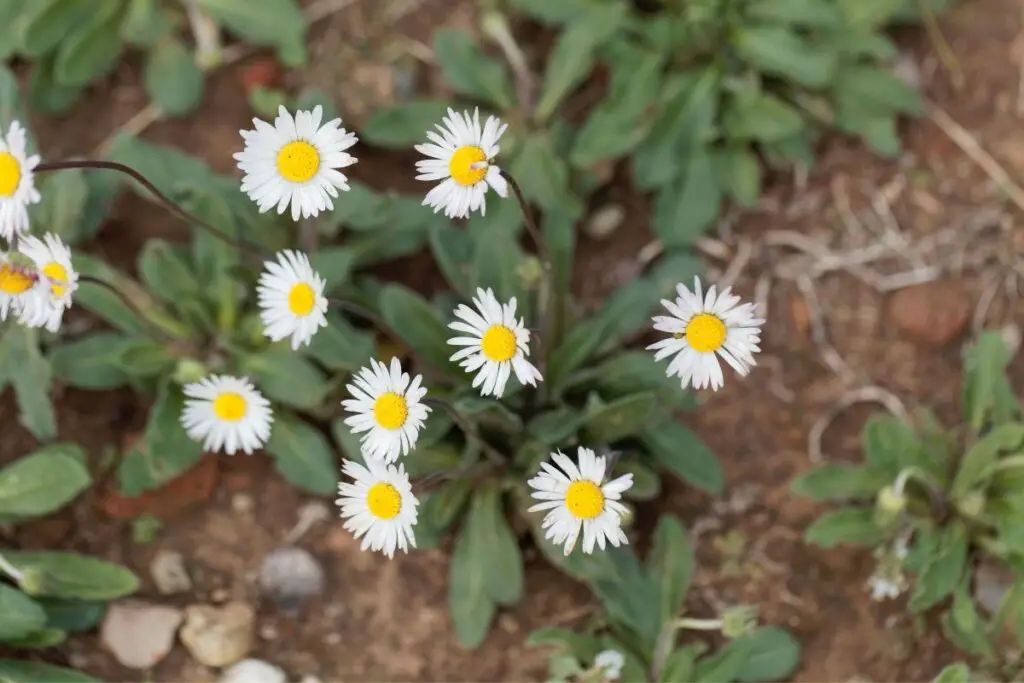
- Fertilize your daisies after two weeks of planting and once a month after that.
- Water daisies as per the season and amount of sunlight they receive.
- Mulch around your daisies and weed as needed.
- Dead-head and prune your daisies as needed and cut down your daisies at the end of the growing season.
- Divide your daisies when they lack space.
- Transplanting from divisions.
Let us now discuss daisies’ outdoors care tips in detail.
Fertilization: You need to use all-purpose fertilizers, which are high in phosphorus. You can use (10-16-10) and (10-10-10) fertilizers. You can sprinkle granular fertilizers on the soil by using a spreader. You can use a sprayer for water-soluble fertilizers. Always check out the instructions given on the label.
Before the new spring growth appears, you have to use a single application of fertilizers as soon as its pushes from the ground. Apply not more than 1 pound (0.45 kg) of nitrogen per 1,000 square feet (305 square meters) to your daisies.
Watering: Daisies do not need a proper watering schedule. You can water them once a week. They prefer the soil to dry out between watering.
Always check the soil, whether dry or moist, by touching it and watering it accordingly. Water deeply from underneath and ensure that the leaves are dry. Daisies do not require much water during winters since the weather is extremely dry. You can water them 1-2 inches (2.5-5.1 cm) every month.
Mulch around your daisies and weed as needed: You need to remove the weeds from your garden since weeds attract parasites and starve daisies of nutrients. You can wear gardening gloves and use short-handled weeding tools for pulling weeds. This process is essential when your daisies are young.
Always apply 2-3inches (5.1-7.6 cm) of mulch in mid to late spring when the ground dries for winter. Keep a 2-3 inches (5.1-7.6cm) circumstance around the plant base.
Deadheading and pruning: To encourage regrowth, you need to remove the dead leaves and snip the flowers’ heads that begin to fade. If you are planning to collect seeds, you need to stop deadheading your daisies near the end of the growing season.
You need to cut down your daisies where the stem of your plants meets the foliage. After trimming down, you can protect the daisies’ root balls with a layer of mulch. You can use straw, hay, and leaves for that.
Periodic division: Dig deeply into the ground 6-8 inches (15.2-20.3 cm) away from plant centers. Then you have to use a shovel for lifting the plant gently out of the ground by the root balls.
Then carefully pull the clump apart and remove the woody centers. Then you have to replant your daisies 12 inches (30.5 cm) away from each other. The most favorable time for dividing daisies is autumn. You can divide them in spring as well.
Transplanting divisions: You can prevent overcrowding by dividing your daisies. It will also keep your plants healthy. You should plant the transplants from divisions as soon as the division is made. It protects the roots from drying out.
Transplant only healthy portions of your plant. Divisions help to find which areas of plants are healthy and which portions are not.
You will need to dig a hole that is approximately one foot deep and wide and add soil and other amendments. For this, you can cut the clump depending on the size of your garden, four clumps or more. Then replant divisions of your daisies.
You need to place your daisies in a temporary container while dividing to move them and plant them right away.
FAQ
1. What is unique about daisies?
Daisies are filled with freshness, happiness, and innocence. They have classic white petals ringed around bright yellow centers, and they are attractive and pleasant. They can thrive in both wet and dry climates and sunny and shady areas.
Bees and other pollinators love daisies. They are relatives of sunflowers and have similar habitats. They have a flat shape that attracts bees because they have plenty of room to land on yellow centers to collect pollen and nectar.
2. What are the health benefits of daisies?
Daisy flower extract is a non-toxic extract of flowers which helpful in brightening skin and preventing hyperpigmentation.
Daisies flowers extract a higher amount of organic acid, which makes them a beneficial ingredient. Daisies leave also have healing effects. Daisies can help remove bacteria from the skin and keep your skin healthy.
3. How can you manage daisies?
Daisies are drought tolerant plants and adaptable to any kind of environment. Every spring, apply some compost and mulch to control weeds as flowers fade, deadhead to extend the blooming season. Also, use low nitrogen fertilizers with NPR numbers such as (0-20-20) for its healthy growth.
4. Are daisies dangerous to pets?
Daisies are not pet-friendly. Daisies can create some problems if your pet digests them. Daisies contain substances like sesquiterpene and pyrethroids that can be toxic for your pets. The results can be severe if your pets consume daisies.
They can suffer many problems like excessive drooling, diarrhea, vomiting, and skin irritation. Loss of appetite can also happen for them. There can be health problems when indigested in large amounts. It also depends on the type of daisies you have.
Daisies can be dangerous for pets like dogs and cats. Certain substances like sesquiterpene and pyrethroids can affect the nose, eyes, and gastrointestinal tract. Similarly, this can affect the digestive system of cats if they consume daisies in a large amount.
Also, daisies are not harmful to all creatures, such as rabbits. Rabbits can consume all parts of the plant, and it is non-toxic for them. You should be very careful in such cases and keep your daisies away from your pets.
Ref: Wikipedia, Britannica, University Of Florida, Ucanr.edu
